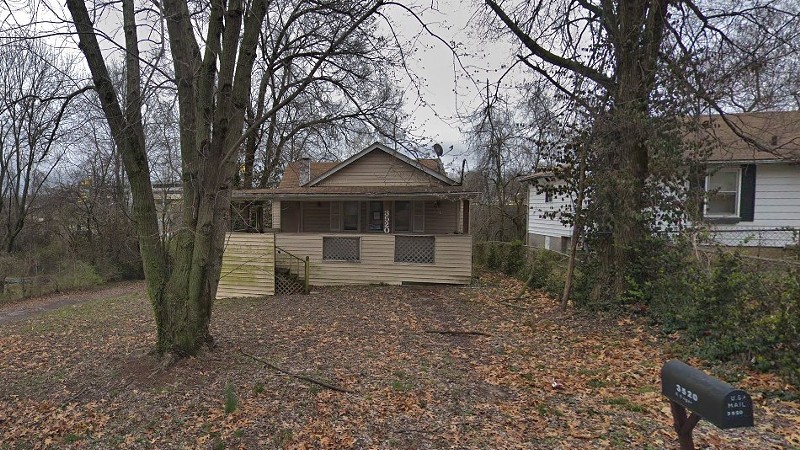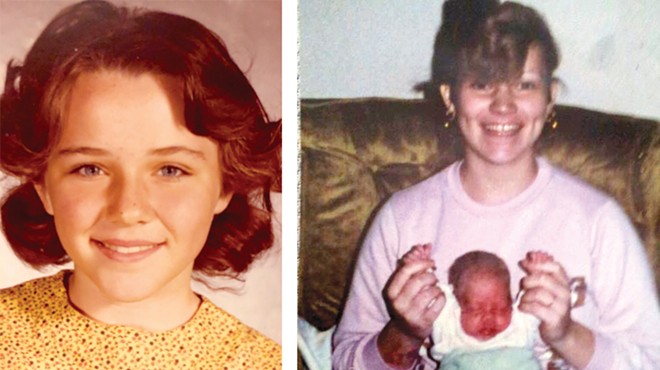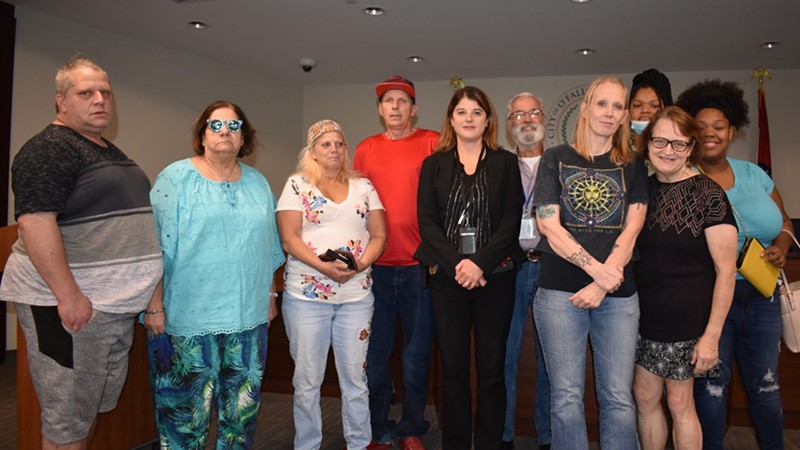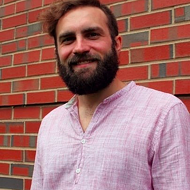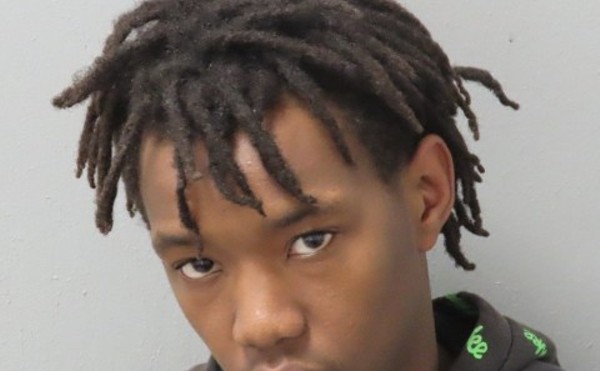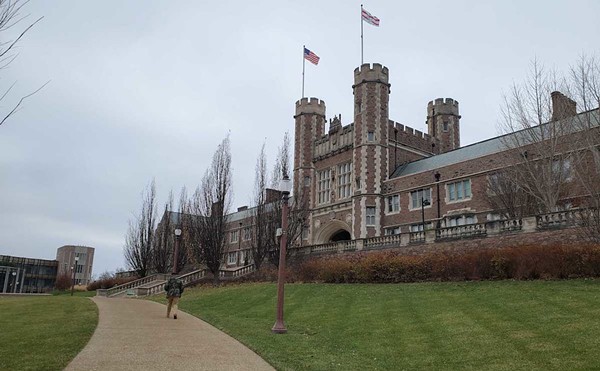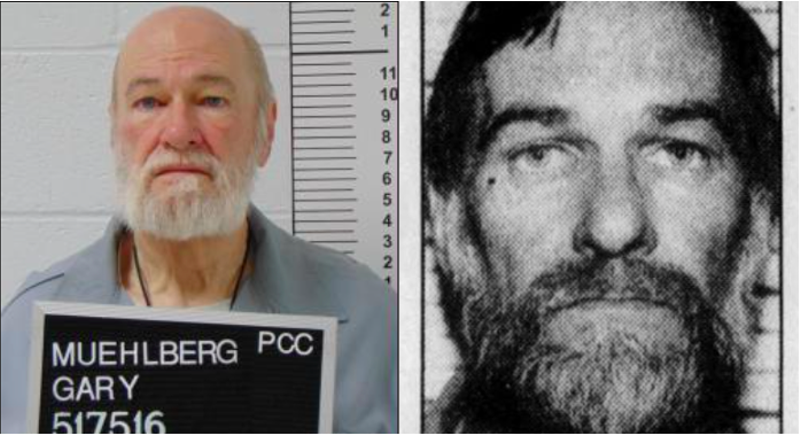
Missouri Department of Corrections, Police Booking Photo
Gary Muehlberg, revealed to be the so-called Package Killer, in March 2020 and in 1993.
After 32 years, St. Louis' most notorious serial-murder cold case appears to have been solved.
Today, St. Charles County prosecutors filed charges against 73-year-old Gary Muehlberg who, according to a probable cause statement, murdered five women in south city over the course of a year beginning in 1990.
See also: How Notorious serial Killer Gary Muehlberg Terrorized St. Louis
The murders of Robyn Mihan, Brenda Pruitt and Sandy Little have long been attributed to the Package Killer. Their too-short lives and tragic fates were the subject of a 2019 RFT cover story.
A probable cause statement written by O'Fallon Police Department Sergeant Jodi Weber says Muehlberg has now confessed to murdering two other women as well, one in 1990 and the other in 1991.
Mihan, Pruitt and Little were abducted from the city’s red-light district, a stretch of Cherokee Street, known at the time as the Southside Stroll. Mihan, 18, was abducted in March 1990. Pruitt, 27, was taken two months later in May, and Sandy Little, 21, disappeared in October.
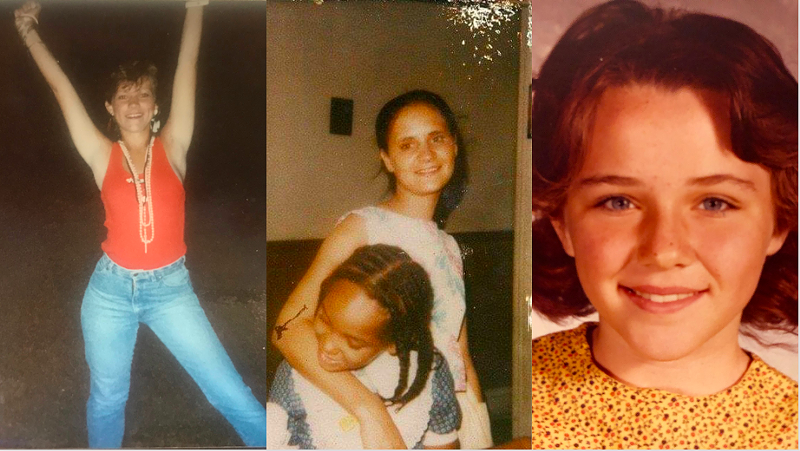
Courtesy Korky Sanders, Antinelle Pruitt, Barb Studt
Three of Muehlberg's victims: Robyn Mihan, Brenda Pruitt, Sandy Little. All three had young children when they were killed
According to the probable cause statement, Muehlberg took each woman to his north county home in Bel-Ridge where he strangled and murdered them. He’d then leave their bodies alongside highways in conspicuous “packages” — such as crammed in a plywood box, tied between two mattresses, or folded in a plastic trash bin — on the outskirts of the St. Louis metro area. Police interpreted this as the serial killer's way of taunting them.
"He's playing games with us. Leaving bodies out in the open, and he's doing a good job," one frustrated detective told the Post-Dispatch at the time.
Because of this macabre modus operandi, the at-large serial killer became known as the Package Killer.
After Little's body was discovered alongside I-70 in O'Fallon on February 17, 1991, the Major Case Squad of Greater St. Louis began coordinating with the FBI. The next time the Package Killer struck, local police would seal off the scene so that federal investigators from Quantico, Virginia, could fly in and process all the evidence.
But the Package Killer never struck again. At least for 32 years that was how it appeared.
Gradually, the murders of Mihan, Pruitt and Little fell out of the city's collective conscious.
"Their lives mattered," says Robyn's mother, Saundra Mihan. "People are different things to different people. Robyn's life did mean something. She was loved."
Cold-case detectives continued to doggedly pursue the case, chasing down more than 450 leads throughout the early 1990s.
They had no idea that the Package Killer had been in prison since 1993.
February 8 of that year, Muehlberg lured an acquaintance over to his house under the pretense of selling him a car.
Kenneth "Doc" Atchison arrived at Muehlberg's house carrying $6,000 cash. Muehlberg killed Atchison, stole his money and his car.
He stashed Atchison's body in a crude coffin in his basement and went on the lam a week later.
Police arrested Muehlberg five weeks later. Upon searching his house, they found Atchison’s body in a bizarre basement with several rooms that had, in some cases, thick concrete walls. He also had a "secret room" that he said could only be accessed by "pushing on a drywall panel just inside the door leading from the basement to the driveway," according to a 1993 police report
Muehlberg was sentenced to life in prison without the possibility of parole in 1995.
Twenty-seven years later, Weber came to pay him a visit.
"He was surprised to see us after 32 years," Weber says.
Weber confronted Muehlberg with pieces of physical evidence found with the Mihan's body that contained Muehlberg's DNA. Technology had finally gotten sophisticated enough to test the physical evidence found in the early 1990s. "It was hard for him to talk about," she says. "If you can believe that."
But on her second visit, Muehlberg confessed not only to the murder of Mihan, but to the murders of Pruitt and Little as well.
On August 5, at a private event between police and the victims' families, Weber announced that the cold case would soon be closed.
On a television screen, she displayed a photo of Gary Muehlberg, and for the first time, the sisters, brothers, mothers, grandchildren and boyfriends of Robyn Mihan, Brenda Pruitt and Sandy Little came face-to-face with their loved ones' killer.
"The only thing I prayed for was that he wasn't dead," said Geneva Talbot, Sandy Little's half-sister. "I had hoped after 30 years, please let us get our justice. Looking at him, I just felt anger."
About three weeks after that meeting with the families, Weber says she got a letter from Muehlberg.
The veteran detective had built a rapport with the killer. In the letter, he "unburdened" himself to her. He had killed two other women, he wrote, one in 1990 and the other in 1991.
One of these victims is Donna Reitmeyer, killed at the age of 40. Her body was found in a trash bin on June 11, 1990, near the intersection of South Broadway and Gasconade Street. She'd last been seen eight days prior by a friend with whom she was working the stroll.
The weeks leading up to Reitmeyer's death illustrate the omnipresent dangers to women working the stroll. She was assaulted by a john after he refused to pay. She told multiple people she was convinced there was another man trying to kill her, but that man was not Gary Muehlberg.
Muehlberg keeps saying that it was a dark time in his life. It's an explanation woefully inadequate, one that Weber finds it impossible to make any sense of.
"For most people, a dark time means issues with drugs," she says. "Nothing like this."
She adds, "He was never on any detectives' radar. More than 50 investigators worked on these cases back in the day and not one linked anything to him. It took technology to catch him."
The charges filed this morning by St. Charles prosecutor Tim Lohmar are for the murder of Little only. It is not yet clear when or whether prosecution in the other alleged murders will file, as Muehlberg's alleged crimes now span four separate jurisdictions.
"The good lord still answers prayers," says Saundra Mihan, mother of Robyn. "He's still in the prayer answering business."
See also: How Notorious Serial Killer Gary Muehlberg Terrorized St. Louis
See also: A Serial Killer Murdered 3 Women in 1990 in St. Louis. He's Never Been Caught
We welcome tips and feedback. Email the author at [email protected]
or follow on Twitter at @RyanWKrull.

